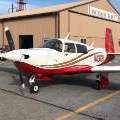Stupid Mistakes
-
Members Online
- 802flyer
- clh
- N201MKTurbo
- Fly Boomer
- jetdriven
- GMBrown
- Immelman
- chiBranda22
- sdmideas
- Marc_B
- DCarlton
- Mooney-TN
- Greg Ellis
- 231DF
- 1980Mooney
- 885EW
- Andy95W
- MattCW
- PT20J
- Derek
- MooneyMitch
- dkkim73
- donkaye
- crustymuffin
- Igor_U
- Taz
- rahill
- JustusSJ
- dzeleski
- Brandon t
- UteM20F
- Parker_Woodruff
- amillet
- redbaron1982
- bluehighwayflyer
- M20E for me
- Rmnpilot
- Gary0747
- Max Clark


Recommended Posts
Join the conversation
You can post now and register later. If you have an account, sign in now to post with your account.